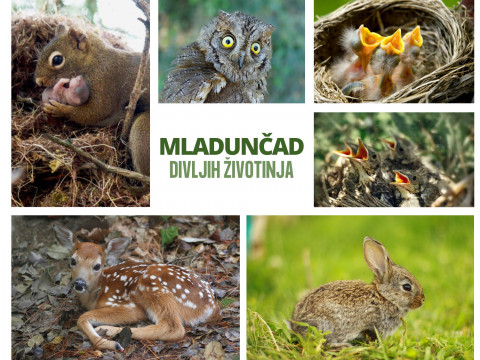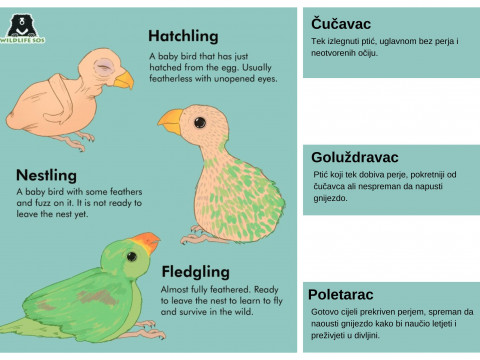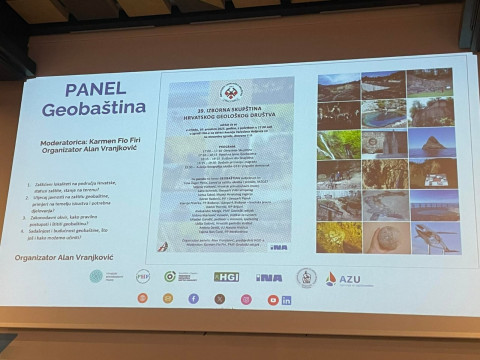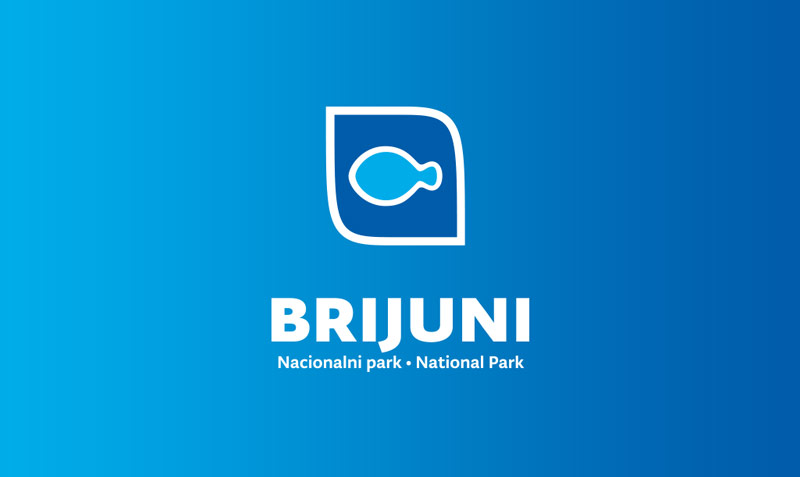WILD ANIMAL CUBS
As spring starts, and continues to summer, nature kinda renews itself. We see more pollinator species, flowers bloom, and cubs born.
Spring and summer are the periods of the year when cubs get a chance to live and begin to explore the world around them. When we talk about wild animal cubs, we usually mean babies of different species of birds (owls, scops owls, blackbirds, swallows...) and mammals (bats, dolphins, deers, rabbits, mouflons, squirrels...).
In the wild, juveniles can often appear lonely, lethargic, and generally appear abandoned to humans. While resting alone under trees or lying camouflaged in tall grass, their parents direct their efforts in search of food or watch their young from a distance, hidden from eyes of others. They do this in order not to draw the predators to the young, which is not yet able to escape swiftly enough. Temporarily leaving a cub, well hidden, is a completely normal phenomenon in nature.
WHAT IF I FIND A WILD CUB? WHAT SHALL I DO?
Given that cubs are always very cute and people often have a protective urge towards seemingly abandoned babies, people often wonder what to do when they find a cub and how to help it survive without its parents.
It is important to note that depending on the age, mobility of the cubs, hunting and other abilities and size vary. A two-day-old newborn is treated differently than a twenty-day-old one, but the golden rule is to first of all remember that it is possible that the parents are hunting and that the seemingly abandoned cub does not really need our help. After we have thought about the situation, there are several steps to be taken in order to properly assess the situation, provided that we do each step wihout touching the cub:
- Check if the cub is breathing;
- Check if there are visible external injuries;
- Identify the species of individual observed, roughly determine the age, and behave accordingly – differently for different species;
- If the cub is breathing and there are no external injuries, then we do not touch the cub, in case we see signs of dehydration or external injuries, we contact the staff of the Animal Protection Department. When it comes to strictly protected animals, we act in such a way that we contact the employees of the Animal Protection Department in any case. (Contacts are given below)
BEHAVIOR OF BABY BIRDS, FIRST AID PROCEDURE
In case you find either a nest with nestlings, an injured or orphaned nestling or fledgling or a newborn that fell out of the nest, first start by identifying how old it is by the type of feathers - if there is mainly lack of feather is a nestling,being few days old. Being this young, they often appear like they are sick, because their balance is still weak and they drag themselves. If they look more like young birds, covered with feathers, they are already a few weeks old and called fledglings. In this phase, they are ready to leave the nest, and they start their first attempts at flying. They can leave the nest, and mostly they fall on the ground. That doesn’t mean they are unprotected or orphaned. Their parents are close, watching them and still feeding them. In this situation don’t interrupt the cycle, leave them where you found them, their parents are close, and will take care of them until they are able to take care of themselves.
If you find a nestling on the ground, probably it fell from the nest, it is ok to touch it with your bare hands - birds don’t have a strong sense of smell, so they won’t reject the nestling if it has a different smell - don’t move the nestling away from the place you found them. The nest is near, and the mother is near. Try to find the right nest in the trees around, if you can’t probably it is because it is out of sight. Take a small shoe box, or something similar, use some old tissues or leaves to put inside and keep it cozy, and put the box in a high place in the tree, as hidden as possible and in the shadow. The mother is close, and will be looking for its nestling.
In any situation, call a wildlife expert (number is available at the end of the text), don’t move the bird unless it is in direct danger, and follow the advice given.
BEHAVIOR OF CUBS IN MAMMALS, FIRST AID PROCEDURE
If you see a fawn (baby deer) alone, it is not likely that it is orphaned if it’s lying down calmly and quietly. The mother is nearby, and only visits them a few times during the day, to avoid attracting predators to their fawns. Furthermore, avoid handling the fawns with your bare hands, if you must touch it do it with gloves on. They won’t reject the fawn if you don't hold it for a long time, but they will want their fawns back, preferably without the smell of a human. Leave the fawn in the place you’ve found them, the mother won’t come back immediately, they will wait until you move away and are out of sight.
Baby rabbits can also be found very often alone, because their mothers leave the babies in the nest, and go out looking for food. Although rabbits are more sensitive to smells than deers, if you handle the baby for too long it can happen that the mother will abandon their younglings. Furthermore, baby rabbits are very sensitive and can die from other factors after being unnecessarily stressed.
When you find a baby squirrel, the procedure is the same as with wild rabbits, but if you think she is in danger, you can put her in a box on a nearby tree.
FIRST AID PROCEDURE FOR STRICTLY PROTECTED ANIMALS:
When it comes to strictly protected animals, we act in such a way that we do not touch the cubs under any circumstances and contact the employees of the Animal Protection Department as soon as possible.
|
Scientific species name |
Species name |
|
Phalacrocorax pygmeus |
Pygmy cormorant |
|
Alcedo atthis |
Common kingfisher |
|
Egretta garzetta |
Little egret |
|
Nycticorax nycticorax |
Black-crowned night heron |
|
Phalacrocorax aristotelis desmarestii |
European shag |
|
Tursiops truncatus |
Common bottlenose dolphin |
|
Podarcis siculus |
Italian wall lizard |
|
Hierophis viridiflavus |
Western whip snake |
|
Hirundo rustica |
Barn swallow |
|
Upupa epops |
Eurasian hoopoe |
|
Himantopus himantopus |
Black-winged stilt |
|
Numenius arquata |
Eurasian curlew |
|
Oriolus oriolus |
Eurasian golden oriole |
|
Emys orbicularis |
European pond turtle |
****Let the wildlife stay wild, and interfere as the last solution. Nature takes the best care of itself.***
After the tips we gave you, if you have any doubts, it is better to reach an expert, and then follow their advice.
Animal Protection Department, contacts:
Francisca Lopes: +385 99 527 3317
Dorotea Ćosić: +385 99 499 9736
Alena Sprčić: +385 99 303 5468
Text: Francisca Lopes, Dorotea Ćosić and Andrea Blašković
Photo author: Goran Šafarek
 Parks of Croatia
Parks of Croatia
 EU projects
EU projects English
English







































